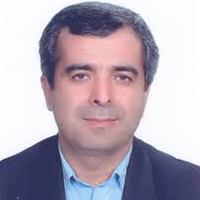Geology, Mineralization and Geochemistry of Au in the Godar Sorkh area, Muteh region, Sanandaj-Sirjan zone
Gold deposits formed during mountain-building processes in Phanerozoic terranes that formed in metamorphic environment have a great dispensation in the world (Goldfarb et al., 2001). They constitute an economically important type of gold mineralization called orogenic gold deposits (Groves et al., 2003). The Sanandaj-Sirjan zone is one of the most important areas for orogenic gold exploration and it hosts several orogenic gold deposits (Aliyari et al., 2012). This zone is characterized by regionally metamorphosed and deformed Paleozoic and Mesozoic sedimentary, volcanic and volcanoclastic rocks under green schist and amphibolite facies conditions. (Rashidnejad-Omran, 2001; Abdollahi et al., 2009; Kouhestani et al., 2014(. The Godar Sorkh area is locatedin the central part of the Sanandaj-Sirjan zone, 20km southwest of the Muteh region. The rocks sequence of the Godar Sorkh area comprise of the volcano-sedimentary rocks of the greenschist complex with Paleozoic age rock units intruded by basic and felsic dikes. These country rocks are affected by a NW-SE-trending shear zone and are highly deformed. Rock units illustrate ductile-brittle to brittle shear zones and had been under poly-phase metamorphism. In other words, Godar Sorkh has the most similarity with orogenic gold.
In this study after field observations, rock samples were collected from mineralized and altered zones that included 26 thin sections, 47 polished sections and 10 polished thin sections which were prepared for petrography, mineralization and alteration studies, 10 samples were prepared for XRD analyses, 21 samples were analyzed for Au content by the Fire Assay method and 21 samples were analyzed by the ICP-MS method for REE and trace element amounts in the Iran Minerals Research and Processing Center, and 9 samples were selected for XRF analyses in the Kansaran Binaloud laboratory. According to the petrographic studies and the results of chemical analysis 7 polished double sections were selected to determine the amount of gold and other elements by electron-microprobe analysis.
The rocks sequence of the Godar Sorkh area comprise of greenschists complexes including limestone, dolomitic, marbles, micaschists, black schist, greenschist, intercalations of quartzite, calc schist, phyllites and slate, metamorphosed under greenschist facies grade. These units are considered to belong to the Paleozoic age. Rock unites have been intruded by basic and felsic dikes. Rock assemblages are characterized by several phases of deformation and generation of various fabrics and structures. Gold mineralization occurs in ductile and brittle shear zones, along N45W trending and controlled by structures. The main alterations are sericitization, carbonization, chloritization, silicification and sulphidization. Ore-mineralogical paragenesis mainly includes pyrite and locally chalcopyrite, arsenopyrite, covellite, sphalerite, galena and Fe Oxide-Hydroxide secondary minerals such as goethite, hematite and limonite. The results show that the maximum grade of gold in the mineralization zone has been reported to be 9.9 ppm and the average value of gold in the area is about 0.3 ppm. The microscopic studies show native gold minerals in the range of 15 to 30 micrometers. Also, electron-microprobe analysis indicates Au in the lattice of sulfide minerals. Based on geochemical studies, rocks have characteristics peraluminous range and the granodiorite intrusion belongs to S type granitoids. LREE are enriched. Controlling parameters for mineral concentration in Godar Sorkh area are shear zone. Therefore, regarding the development of Paleozoic metavolcanic-sedimentary sequences and the formation of multistage extensional structures including the normal faults, and fractures, texture and structure investigation, mineral paragenesis, alteration and geochemistry, gold mineralization in the Godar Sorkh area can be classified as orogenic gold mineralization.
- حق عضویت دریافتی صرف حمایت از نشریات عضو و نگهداری، تکمیل و توسعه مگیران میشود.
- پرداخت حق اشتراک و دانلود مقالات اجازه بازنشر آن در سایر رسانههای چاپی و دیجیتال را به کاربر نمیدهد.



